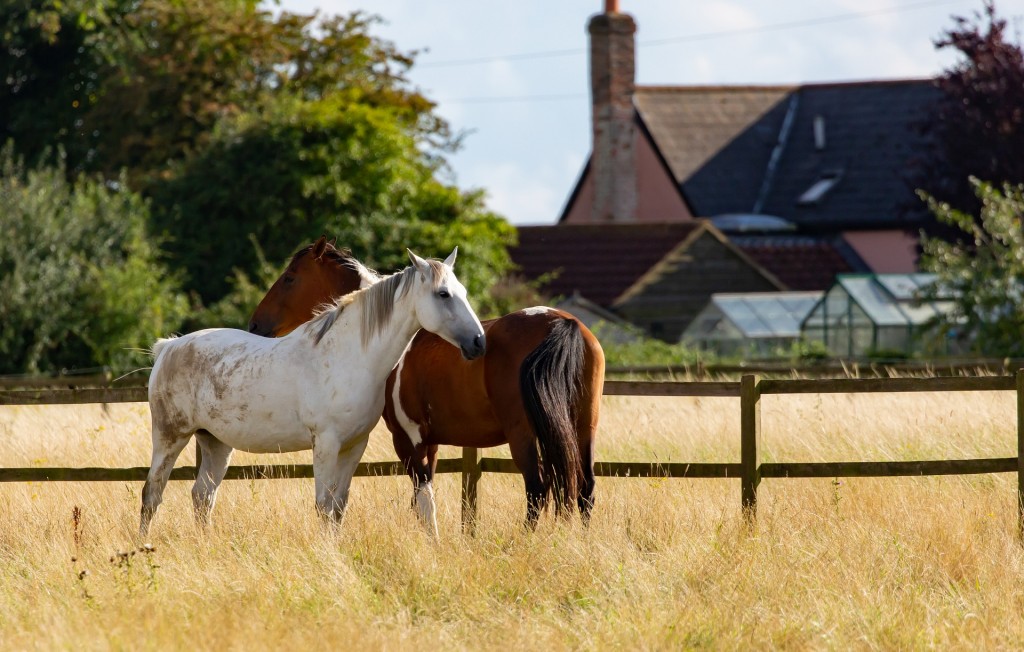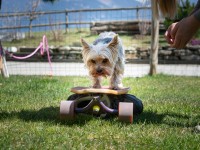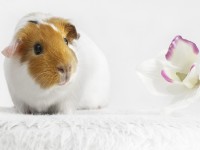Why is it good to train horses?
Training a horse is an important part of taking care of this animal. It’s like teaching your child how to behave in the society, how to treat other people and educating him in order to let him be an independent person, who has some skills to provide for himself. Teaching a this animal obedience and other tricks, which it might perform and which are adored by public is not exclusively aimed at making the animal able to do some tasks a human is telling it to. It’s not for the looks or owner’s and public’s amusement. Although, it certainly comes in the package.
The matter is that if you take an animal and bring it into the conditions, where it is supposed to live with humans, but not in the wild, you have to make it feel comfortable in those circumstances. A horse shouldn’t be afraid of a person, who gives it the food, washes it and takes care of its hooves and mane. It shouldn’t freak out when a person tries to climb on it and ride it. As it can’t simply go to the field, munch on some grass and live in a herd as it used to hundreds of years ago. It depends on humans’ attention now.
So, it’s much better for horses to learn that their owners are people, who wish the best for them, who’ll feed them regularly, who’ll take them for the rides they will enjoy. Horses love interaction. They’re so intelligent that sometimes we can’t even believe it. They absolutely enjoy long rides. And they need the discipline and the certain established routine, just like any other pet (a dog, for instance) and even human being. Once the connection between the pet and its owner is established, the animal will be emotionally attached to human. It will learn how to rely on the owner. So, the learning process will be much easier for it.
Most importantly, teaching the horse some basic tricks and obedience helps it to adjust to the conditions of living with a human being. And, it also prevents it from getting into the dangerous situations (both for the animal and its owner). It will learn to accept the human’s presence and even to enjoy it. After some time and training, it will like to be ridden; it will enjoy taking the owner to fast, but still quite safe run without any accidents. The horse will feel much more confident and less scared. And, if it suddenly appears in the situation, when it feels like it’s in danger, the owner will be able to apply some techniques to calm his animal down, so that it doesn’t hurt itself or him.
The last thing I want to mention before proceeding to the actual horse training process is that the younger the pe is when you start training it the better. Just as little children, horses are much easier to train when they’re quite young. You may form its character and behavior. And, the bond between you two will develop much faster and it will be much stronger.
That’s also why it’s better for you to train your pet yourself, even if you don’t really have any experience in it. Of course, you have to educate yourself and read a good portion of proper literature on how to train a horse and how to take care of it. This will also help you figure out what accessories you’ll need to purchase, the proper diet and exercise routine for the animal, etc. But, it’s also good to have the professional’s assistance too. An experienced horse trainer will teach you the most important training techniques in practice. You won’t accidentally scare the animal or anything like that being an inexperienced trainer, as the specialists will be by your side. But, you won’t leave your animal with a complete stranger and miss the opportunity to bond with it and teach it to listen to you at the same time.
So, go to HireRush.com to find a horse training or boarding facility, which, by the way, is quite convenient if you can’t really keep your horse at home and you want to provide it with professional care and spacious stall, riding trails and arenas, ‘walking’ areas, etc. As boarding facilities keep many animals, your one won’t be separated from its congeners. But, even if you pick this option and cooperate with professionals to take care of your pet, you’ll still have to perform the basic horse training and maintenance tasks yourself. Otherwise, buying a horse makes no sense.
Find a horse boarding facility

7 basic horse training tips for beginners
- Remember, there’s a ton of separate books that teach the owners how to break a horse to ride, how to take care of this animal, which tricks have to be teach your horse first, which disturbing signs to watch out for considering the horse’s health and disturbance when training a horse. A good part of them are devoted to the subject of choosing and bonding with a horse. They’re written by passionate professional trainers, who’ve dedicated their lives to horses and learned a lot about them over a couple of decades. Those should be your main sores of horse training information, as well as the advice of your horse’s trainer.
- Learn how to ride a horse first. Attend horse riding classes or hire a personal trainer to get yourself feeling comfortable and confident in the saddle and being able to control the horse’s motions in different situations. You have to gain those skills before getting your own horse and starting to train it and especially breaking it to ride. The horse feels human’s fear. That’s why an unconfident rider, who get scared when a horse does a weird move or a flic, starts bolting or something like that, won’t be able to tame the animal and show it who’s the leader.
Check out sports lessons (including horse riding ones) - Start training your horse with establishing a strong bond with it. Teach it not to be afraid of humans. Don’t rush and don’t push your pet too hard to do certain things or tricks. The animal has its own feelings and emotions. Let it get used to you, become friends with it. Begin with getting the horse allow you to touch its muzzle, its sides, its mane, etc. This is vital not only for training, but also for caring for your horse. And, the physical barrier is the first obstacle you should break to start bonding with a horse.
Approach the animal from its front, slowly reach out to its neck or nose, so that you’re able to observe its reaction and respond to its sudden actions. If the horsey doesn’t show any signs of aggression or disturbance, start petting its neck and move to the muzzle if it is not annoyed with your moves. Reward the pet with a couple of treats. Keep on petting if the animal starts feeling anxious. Place your hand somewhere else and move to the ‘nervous’ zone gradually. Don’t remove the hand if the animal is obviously nervous, as this will show it that your hand is dangerous. Give it some time to adjust. Don’t expect everything happen in one day. Even people don’t become friends so quickly, although they share a communication system. In the end, the horse shouldn’t have any problems with you touching it. - The next step is to teach your horsey how to walk next to you and how to stop and move in response to your commands. This is the first stages of establishing your leadership. Walk parallel to the animal and use a crop to lead it. Don’t let it walk too far behind or away from you. Leave the crop once the horse starts walking as you want it to walk and take it back in your hands if it starts outpacing or falling behind you.
Walk beside the horse and stop saying ‘woah”. If your animal keeps on going, repeat the same procedure, but stop in front of its face this time. Bring the crop along with you. Keep on training for a couple of days until your horse obeys these basic commands without delay. - One of the most difficult thing in basic horse training is longing and desensitizing. But, those horse training stages are quite important, even though they are really tough for a horse and take a long time to complete. My tip here is to do everything gradually, so that the young horse has a chance to adapt to the changes you introduce every single day. The consistency is also the key element of training.
Longing and desensitizing helps the horse release its energy while you still can’t ride it. It’s also a good way to teach the animal to obey the cues in more extreme conditions and also to behave itself in stressful situations. It teaches the animal to overcome the most common horse’s fears (those include loud noises, dog’s barks, car’s roar, quick movements, flapping things, etc.). In the end, the horse should be much calmer around people and less affected by ‘scary’ noises and objects. So, desensitizing and longing not only make the horse more disciplined, but also much more adjusted to new living and riding conditions. Most commonly, the animal is leaded by its owner with the help of a rope halter, imitated rope reins and a long lead. It should rung in circles around the owner, who tells it the basic cues (like to stop or keep moving) and subjects it to the influence of the horse fears. It can be a loud rustling plastic bag on a stick or other noises, which can’t be removed until the horse calms down. It might seem quite strict and controversial, but both horse and its owner will benefit from such training. The animal will listen to the owner’s cues even when it’s stressed out. At the same time, less and less things will provoke its stress, misbehavior, fear and even aggression. - Training the horse to ride under the saddle is a whole chapter of the horse training. It’s a crucial moment of the entire process. The animal is slowly introduced into each element of the horse tack. The saddle is never put on the young horsey right away. Professionals start breaking the horse with a blanket, which imitates the saddle and walking your mare or stallion around the arena or along the track with this blanket on. Remember, walking, not riding. Choosing the right saddle pad for your horse is as essential as having patience and trusting the process. Not only does a saddle pad improve comfort, but it also has other benefits that are essential for development and performance. A saddle pad that fits properly allows for even weight distribution across the back of your horse, promoting proper posture throughout the ride. All of this ensures that as you train a young horse there is comfort on both sides, ensuring a successful transition into mature riding. The next gear element to introduce the horse to is the surcingle.
After a couple of weeks, the saddle may be put on the horse together with the bitless bridle. Again, walking and longing should come ahead of riding. The reins and the bit are the last tack pieces the horse is trained to wear. The key tip to breaking the horse to ride under the saddle and with its full gear on is to proceed to the next step only when you see that your animal is completely comfortable with walking while having some of the gear pieces on. Don’t mount on your horsey until it gets a chance to get used to wearing the complete gear for a couple of days. Ask a professional trainer from your horses’ boarding facility to help you out to avoid traumatizing experience. - The reward and punishment system is a must-have for training horses. You need to let the animal know when it does good or wrong. And, the praising and punishment methods should be understandable for a horse. For instance, petting it or giving it some healthy treats after a successful trick or training session will do the job. Most horses also like to get their mane and bodies brushed or even washed. After some training, they also enjoy long and deliberating walks. But, telling horses off should be done extremely carefully. You don’t want to scare the animal and lose its trust. If it doesn’t listen, just continue doing what you’re doing and make it obey your cues. And, there is only one situation when you may hit your horsey (either with a whip or by the owners legs on its sides) or apply any painful punishment. It’s called ‘absolutely never’.





